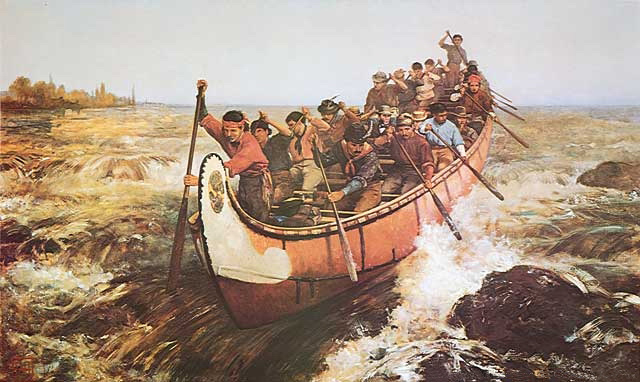DCHP-2
canot du maître [< Canadian French 'master's canoe'] DCHP-2 (November 2016)
n. — historical, Fur trade
a large freight canoe, carrying loads up to three tons (see Image 1).
Type: 1. Origin — These canoes, named after Louis Maître, the artisan who first made them, were used by fur trading companies to carry heavy freight during the fur trade (see HBC Heritage reference). At about twelve metres in length they were the largest type of canoe. They required a crew of ten to twelve paddlers, but could be carried by just four men. Also known as Montreal canoes (see the 1974 quotation).
See also Gage-1, s.v. "canot du maître", which is marked "Cdn. French", and OED-3, s.v. "canot", which is described as "relating to the Canadian fur trade".See also: canot du nord maître canot Montreal canoe (Image 1) North canoe portage ((v.)) (def. 1a)
References:
- Gage-1
- HBC Heritage "Transportation and Technology: The Canoe" Accessed 14 Nov. 2012
- OED-3
Images:

Image 1: "Shooting the Rapids". 1879 painting by Frances Anne Hopkins (1838-1919). (Source: Wikimedia Commons).